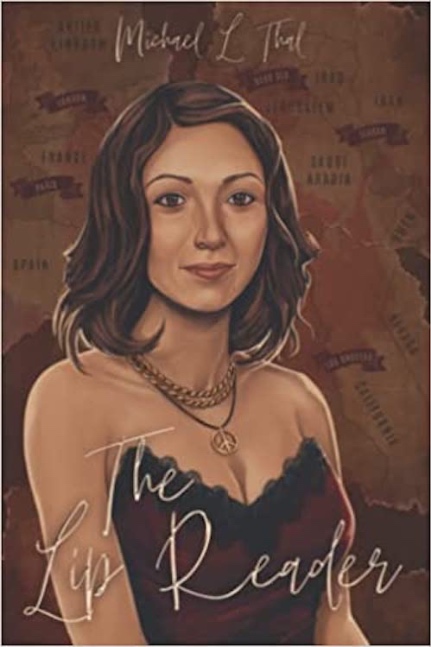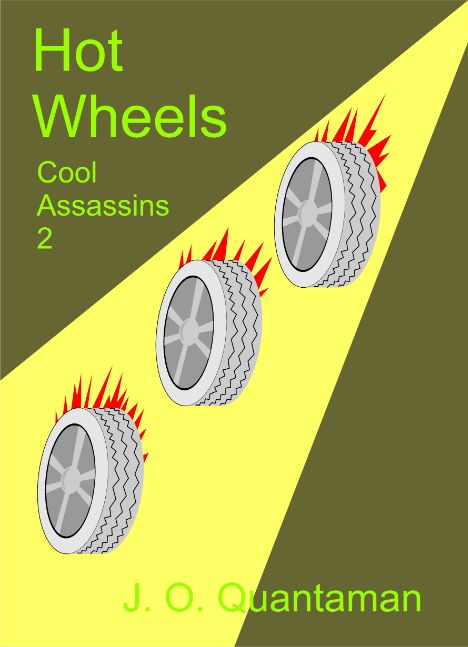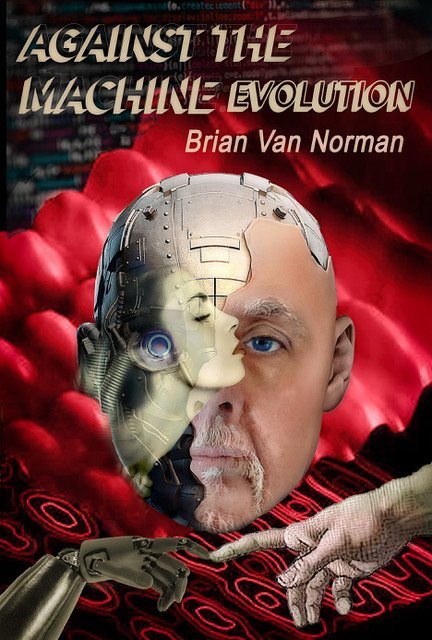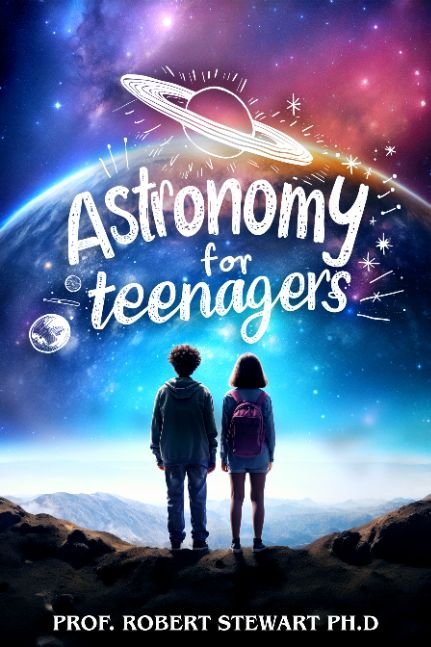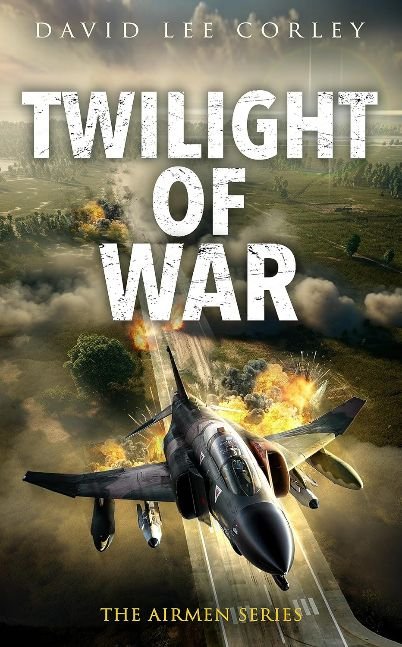- Home
- Book Trailer
- Global Goals for Societal Transformation -Author Seema Goyal’s Interview
Global Goals for Societal Transformation -Author Seema Goyal’s Interview
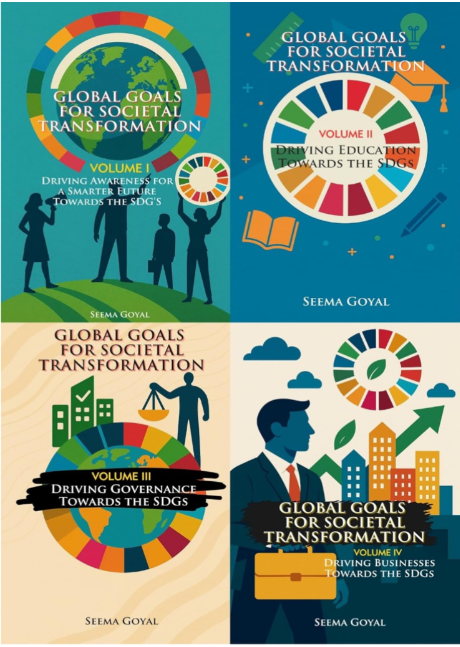 www.sdgreadiness.com
www.sdgreadiness.com
How did you become an author and get published? Share your experience.
I became an author not because I set out to write books, but because I felt compelled to give shape to ideas that had been evolving across decades of work. For over 25 years, I worked in education, policy, and sustainability — often at the intersection of systems that rarely spoke to one another. Over time, patterns began to emerge. I saw the urgent need to bridge education, ESG values, and skill-building into something more cohesive, more transformational.
Writing became the way I made sense of that complexity — and more importantly, a way to share it with others who were wrestling with similar questions.
As for publishing, I took a research-led, purpose-driven approach. The Global Goals for Societal Transformation series began as part of my ongoing PhD work, but quickly expanded into something broader — a body of work meant to support educators, policymakers, and sustainability leaders. I chose to publish independently through Amazon and KDP, which gave me full creative control and the ability to reach a global audience quickly and directly.
It wasn’t a linear path. It required discipline, clarity, and community. But in the end, the writing — and the publishing — were acts of systems leadership in their own right: connecting, communicating, and catalyzing change.
When you're working on a book and a new idea pops up, should you pursue it immediately (also known as 'UP syndrome') or finish your current project first? What do you think is the best course of action?
I call it “the discipline of creative restraint.” In systems thinking — and writing — ideas don’t appear in straight lines. So when a new idea emerges mid-project, I see it as a signal, not a detour. I don’t chase it immediately, but I don’t ignore it either.
I keep what I call a “lateral notebook” — a space where I capture new insights without letting them hijack the current work. This way, I honor the creative momentum without fragmenting my focus.
Sometimes, those ideas are actually part of the current system I’m building — they just reveal themselves late. Other times, they become seeds for the next project. But for me, the key is clarity: Am I being pulled toward purpose, or distracted by novelty?
So I finish what I start — but I listen closely to what’s knocking at the edge of the page. Often, that next idea is already shaping the future.
Can you explain your writing process? Do you prefer to create an outline and plan beforehand, or do you prefer to write more spontaneously and organically?
My writing process is very much a reflection of how I approach systems work: it’s both structured and adaptive.
I always begin with an outline — but not a rigid one. I treat it more like a roadmap with optional scenic routes. I start by mapping the big questions I want the work to answer, then I identify core themes, connections, and gaps. Because the series deals with complex intersections — education, ESG, sustainability, and skills — I find that having a clear conceptual structure actually gives me more freedom to think creatively within it.
That said, I leave plenty of space for spontaneity and emergence. Some of my most meaningful insights — especially the metaphors and bridges between disciplines — didn’t come from planning. They came from sitting with complexityand allowing the ideas to speak to each other.
So I’d say I plan deeply to honor the complexity, but I write organically to honor the humanity of the message. It's a dance between discipline and discovery.
Who is the intended audience for the series — and how do you hope they’ll use it?
The books are written for a broad spectrum of changemakers: policy designers, educators, sustainability professionals, youth leaders, and researchers. Each volume is structured to bridge theory and action — so whether you’re redesigning a curriculum, shaping a national ESG policy, or launching a youth platform, the tools and insights can guide you toward impact that’s both measurable and meaningful.
Tell us what you enjoy most about writing [genre].
What I enjoy most is the sense of possibility this genre offers. Writing at the intersection of education, sustainability, and systems thinking allows me to connect dots across sectors, disciplines, and generations. It’s not just about analyzing problems — it’s about envisioning alternatives and building frameworks for transformation.
This genre gives me the freedom to blend research with reflection, policy with practice, and imagination with implementation. I get to ask: What if education prepared people to lead, not just follow? What if ESG became a value system, not just a reporting tool?
I love that I can write for multiple audiences — educators, policymakers, young changemakers — and create work that doesn’t live only in libraries, but in boardrooms, classrooms, and community spaces. It’s writing with purpose, and for me, that’s deeply fulfilling.
What have you found to be most challenging about writing in [genre]?
The most challenging part of writing in this genre — where policy, education, and sustainability intersect — is translating complexity without oversimplifying. I’m writing for diverse audiences: educators, policy professionals, youth advocates, ESG analysts. Each group speaks a different “language,” yet the systems they operate in are deeply interconnected.
So the challenge was to bridge vocabulary without diluting meaning — to hold academic rigor while staying accessible, and to stay rooted in real-world practice without losing theoretical depth. There were moments when I felt I was building a bridge while walking on it.
Another challenge is that this genre asks not just for information but for insight and imagination. It’s not enough to describe what is — you have to provoke thinking about what could be. That requires both evidence and courage.
But in that challenge lies the purpose of the work: to bring clarity to complexity and to offer tools for reimagining, not just reforming, systems.
Have you been able to incorporate your previous experience in [jobs/education] in your writing?
Very much so. In fact, the Global Goals for Societal Transformation series is built on the foundation of my lived professional experience — it’s not separate from my work, it’s a reflection of it.
My years in education, policy advisory, and sustainability initiatives gave me a front-row seat to how fragmented our systems often are — how education reforms happen without ESG integration, or how skills are taught without reference to ethical leadership or social equity. These observations became not just background but core case material in my writing.
Equally, my academic journey — especially my ongoing PhD — gave me the tools to make sense of those experiences systemically. So my writing became a kind of bridge: between what I had seen in the field, and what I could now name, frame, and reimagine through research.
In short: my past work didn’t just inform the book — it demanded the book. It was my way of giving form and voice to insights that had been growing across years of practice.
Describe the [book/series] in 10 words or less for people who are just learning about it.
Alternate 10-Word Taglines:
- “Where learning meets leadership to shape a just, sustainable future.”
- “Transforming knowledge into action through education, ethics, and innovation.”
- “Equipping system shapers through education, sustainability, and shared purpose.”
- “A roadmap for reimagining education in the SDG era.”
- “Building future-ready systems through skills, values, and vision.”
Would you like readers to have any specific takeaway from your book?
We don’t just need better systems — we need system shapers.
Global Goals for Societal Transformation is not just a call for reform. It’s an invitation to rethink how we prepare people — especially young people — to lead with values, to navigate complexity, and to design futures worth living in.
I want readers to see that education, sustainability, and ethical leadership are not separate silos. When we align them, we create the conditions for real transformation — not just in institutions, but in mindsets, policies, and possibilities.
Whether you’re a policymaker, educator, student, or sustainability professional, my hope is that this book gives you a clearer map and a deeper sense of agency in shaping the systems around you.
Can you describe a core framework or model introduced in the series?
Yes — one of the central frameworks is what I call the "Learner–Leader–Livelihood Bridge". It illustrates how education, ESG principles, and skill development can be braided into a shared language that prepares individuals not only for employment but for ethical leadership and social innovation. By integrating values (ESG), capabilities (skills), and systems awareness (education), we move beyond siloed reforms toward holistic, future-ready systems.
Do you have any unusual writing habits?
Nothing specific
As an author, what critique has been the most challenging for you to receive? On the other hand, what compliment has been the most rewarding?
The most challenging critique I’ve received was that parts of my work felt “too ambitious” — as if trying to connect education, ESG, skills, and systems change was too broad to be useful. It stung, not because it was unkind, but because it touched the heart of my mission: to show that these silos are artificial, and that transformation requires crossing boundaries. It challenged me to sharpen my framing — not to think smaller, but to communicate more clearly.
On the other hand, the most rewarding compliment came from a young reader who said, “Your book made me feel like I could redesign the system — not just survive it.” That one sentence reminded me why I write. It's not just to inform — it’s to inspire agency, especially in people who’ve been trained to adapt, not to lead.
In the end, both critique and compliment served the same purpose: they made the work better, and more deeply aligned with the impact I hope to create.
Share some advice for aspiring authors. What advice would you give to your younger self?1. What is your favorite line from your book?
Start writing before you feel “ready.” Don’t wait for the perfect idea, the perfect moment, or the perfect structure — clarity comes from engagement, not from hesitation. Writing is not about having all the answers; it’s about holding questions long enough to shape something meaningful.
Also, don’t underestimate the value of your unique perspective. Especially if you’re writing across disciplines — education, sustainability, policy — your voice might not fit a mold. That’s a strength, not a flaw. Lean into it.
And finally, protect your energy. Not everything you write has to be public, but everything you write should feel true.
What do you see as the most urgent call to action emerging from your research?
The most urgent call is this: we must stop preparing people to enter systems they cannot influence. Education and sustainability must not be parallel pathways — they must converge to equip people with the agency, ethical grounding, and resilience to lead transformation. This decade demands not just innovation, but reimagination. That’s what I hope the series sparks in every reader — the courage to design futures, not just respond to them.
To date, what is your favorite (or most difficult) chapter you have ever written?
The most difficult — and in many ways, the most meaningful — chapter I wrote was titled “From Participation to Power: Rethinking Youth Agency in the SDG Era.” It challenged me to go beyond policy rhetoric and really interrogate whether we are preparing young people to enter systems — or to transform them.
What made it difficult was the tension: I had to hold space for the structural barriers youth face while also insisting on their role as active co-creators of the future. Writing it meant sitting with discomfort — questioning how even well-meaning education or ESG programs can reinforce passivity if they don’t center agency, ethics, and innovation.
But it’s also my favorite because it felt like the emotional and intellectual heart of the series. It reminded me why I began this work in the first place — to build pathways where learning becomes leadership, and systems become shapeable.
Have you ever experienced writer’s block? How did you deal with it?
Absolutely — I’ve experienced writer’s block, especially during the synthesis phase of my research when I was trying to bring together education theory, ESG frameworks, and systems thinking into one coherent narrative. The block didn’t come from lack of content — it came from too much complexity.
What helped me was stepping away from the page and re-engaging with why I started. I would revisit a powerful conversation I had with a young learner, reread an SDG framework, or even sketch out visual metaphors of my thinking. I also relied on foresight tools — like scenario mapping or framing “what if” questions — to loosen rigid thought patterns. That helped me move from perfectionism to progress.
Sometimes, I just needed to write badly on purpose — and trust that clarity would come in the editing. In systems thinking, clarity often follows confusion — and writer’s block is just a sign you’re sitting in the complexity long enough to find something meaningful.
Was there anything you had to research for the book?
Yes — in fact, the series is rooted in extensive interdisciplinary research. While I drew from over two decades of professional experience, I also wanted the work to be rigorous, evidence-based, and globally relevant. That meant diving deep into areas such as:
- ESG frameworks and their evolution in both corporate and public sector contexts
- Education policy analysis, including curriculum reform, skills taxonomies, and global learning outcomes
- Strategic foresight and systems thinking methodologies — to explore how different futures could emerge depending on the choices we make now
- SDG implementation data, including Voluntary National Reviews and UN-led policy coherence frameworks
- And perhaps most importantly, youth agency and leadership development — because much of the book centers on enabling young people to move from system participants to system shapers
The research wasn’t just academic — I also engaged with practitioners, reviewed case studies, and examined real-world pilot programs to ensure the ideas were grounded, actionable, and adaptable across sectors.
How does the book series approach the SDGs differently from other academic or policy texts?
Rather than treating the SDGs as static global targets, the series explores them as dynamic levers for systemic transformation. It blends foresight tools, systems thinking, and educational design — drawing from real-world experiments and interdisciplinary research. The goal was not just to track SDG progress, but to provoke new ways of thinking about leadership, values, and capability-building in a world facing complexity and climate crisis.
Did you have any say in the cover design?
Yes, and I’m grateful I did — because the cover needed to reflect the spirit of the work, not just its content. Global Goals for Societal Transformation isn't just a policy book or an academic text; it’s about connection, systems, and reimagining the future. So the cover had to feel open, hopeful, and layered — just like the themes inside.
I collaborated closely with the designer, sharing key concepts like “bridging,” “braiding,” and “systemic flow.” We explored metaphors — from roots and ecosystems to networks and mandalas — and aimed for a look that felt both intellectual and alive. The final design feels like a visual synthesis of the work itself: grounded in complexity, but pointing toward transformation.
What can we anticipate from you moving forward?
Moving forward, my focus is on deepening the work that Global Goals for Societal Transformation began — turning big ideas into accessible frameworks, tools, and collaborations that can drive real systems change.
I’m currently working on:
- A practical toolkit to help educators, policymakers, and ESG professionals apply the frameworks from the book in real-world settings.
- Continuing my PhD research, which explores how education and ESG can become catalysts for ethical, future-ready leadership.
- And I’m exploring ways to bring this work into training spaces, policy dialogues, and youth platforms — spaces where transformation can be accelerated, not just theorized.
So whether it’s through writing, speaking, or convening change-makers across sectors, you can expect me to keep building bridges — between knowledge and action, learning and leadership, vision and implementation.
Because transformation doesn’t happen in one book — it happens when the right people come together to carry the work forward.
Do you have any movie or tv adaptations in the works?
No not yet.
Did you always want to be an author? If not, what did you want to be when you grew up?
I didn’t always want to be an author in the formal sense, but I’ve always been a question-asker, a note-taker, and a pattern-finder. As a child, I wanted to be a administrator — not just because I admired them, but because I was fascinated by how people learn, connect ideas, and make sense of the world.
Over time, that curiosity deepened into systems thinking — and writing became my way of making meaning. I didn’t set out to write books, but I found myself gathering threads from policy, education, and sustainability that needed to be woven into something others could use.
So in a way, I didn’t become an author to write, but to build bridges — between sectors, ideas, and generations. The books were simply the most natural form that bridge could take.
How long did it take you to write this book?
In one sense, it took about two years to bring the Global Goals for Societal Transformation series from concept to publication. But in another sense — it took decades. This series is the result of 25+ years of experience working across education, policy, sustainability, and systems thinking. Every chapter reflects not just research, but lived practice, field engagement, and countless conversations with learners, leaders, and changemakers.
The actual writing and editing took focused time — but the real work was synthesizing complexity into clarity. It was about distilling insights without oversimplifying them. That took patience, deep reflection, and a willingness to rewrite not just the manuscript, but sometimes even my own assumptions.
So yes — it was a multi-year writing project, but a lifelong journey in the making.
Where do you like to write? In a coffee shop? In your home office? On the beach?
At home
What other hobbies do you have outside of writing?
Outside of writing, I find joy in nature walks, mindful travel, and heritage exploration — experiences that reconnect me to culture, context, and the slow wisdom of place. I’ve always believed that systems thinking doesn’t just live in books — it lives in landscapes, traditions, and conversations with people who see the world differently.
I also love visual journaling and conceptual sketching — not as an artist, but as a thinker. Sometimes ideas arrive through shapes, not sentences. And more recently, would love to curate community dialogues on learning, leadership, and sustainability — not as formal events, but as shared spaces for reflection and co-creation.
These practices nourish the writing — and remind me that transformation is as much about how we live as what we write.
What inspired you to write the “Global Goals for Societal Transformation” series?
The inspiration came from a disconnect I observed in my policy and education work — where education, ESG commitments, and workforce development were advancing in parallel, but rarely converging. I wanted to build a framework that not only diagnoses this fragmentation but offers a way to reimagine these domains as mutually reinforcing. The series is both a critique and a blueprint — to turn learners into system shapers, not just job seekers or knowledge absorbers.


